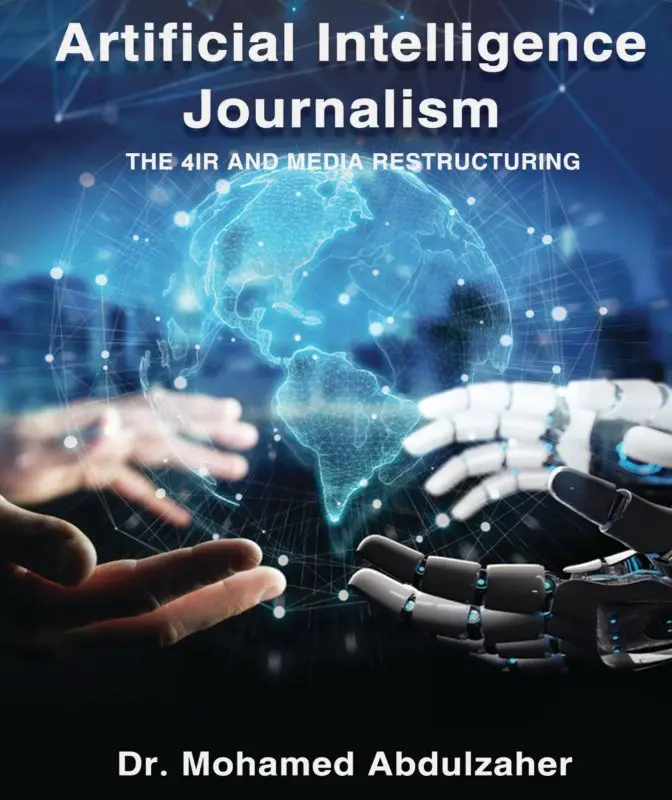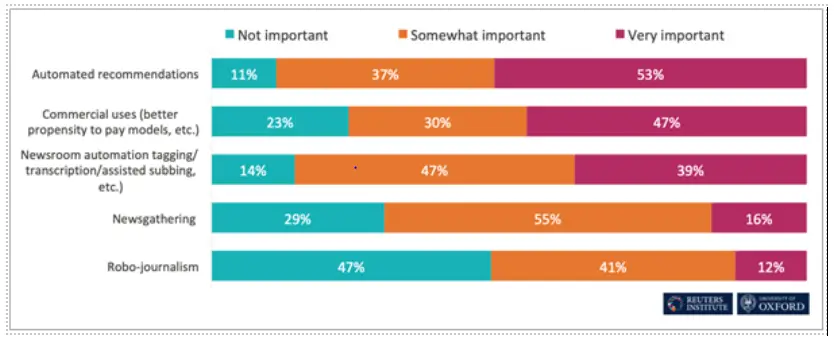The Future Of News And Journalism In The Age Of Gemini Ai

Introduction
The rapid development of artificial intelligence (AI) is having a profound impact on many industries, and the news and journalism sector is no exception. AI-powered tools are already being used to automate tasks such as newsgathering, fact-checking and writing, and their use is only expected to increase in the coming years. This raises important questions about the future of news and journalism, and the role that AI will play in it.
How AI is changing the news landscape
AI is already having a significant impact on the way that news is gathered, produced and consumed. AI-powered tools are being used to:
- Gather news: AI can be used to monitor social media, news websites and other sources for breaking news stories. This can help journalists to stay ahead of the curve and to identify stories that might otherwise be missed.
- Fact-check news: AI can be used to check the accuracy of news stories by verifying facts and identifying potential biases. This can help to ensure that the news that is disseminated to the public is accurate and reliable.
- Write news: AI can be used to write news stories, summaries and even articles. This can free up journalists to focus on more complex and time-consuming tasks, such as investigations and interviews.
The potential benefits of AI for news and journalism
The use of AI in news and journalism has the potential to bring a number of benefits, including:
- Increased efficiency: AI can automate many of the tasks that are currently performed by journalists, such as newsgathering and fact-checking. This can free up journalists to focus on more creative and strategic work.
- Improved accuracy: AI can help to ensure that news stories are accurate and reliable by verifying facts and identifying potential biases. This can help to build trust between journalists and the public.
- Greater reach: AI can be used to disseminate news stories to a wider audience through social media and other channels. This can help to increase the visibility of news organizations and to ensure that more people are informed about important issues.
The challenges of AI for news and journalism
While AI has the potential to bring a number of benefits to news and journalism, there are also some challenges that need to be addressed. These include:
- Job losses: AI could lead to job losses in the news and journalism sector as AI-powered tools automate more and more tasks. This could have a significant impact on the livelihoods of journalists and other media professionals.
- Bias: AI systems can be biased, which could lead to inaccurate or unfair news coverage. It is important to ensure that AI systems are developed and used in a way that minimizes bias.
- Trust: The use of AI in news and journalism could damage trust between journalists and the public. This is because AI systems can be seen as opaque and untrustworthy. It is important to ensure that the public understands how AI is being used in news and journalism, and that they trust the systems that are being used.
Conclusion
The future of news and journalism in the age of AI is uncertain. However, it is clear that AI will play an increasingly important role in the way that news is gathered, produced and consumed. It is important that journalists, media organizations and the public are aware of the potential benefits and challenges of AI, and that they work together to shape the future of news and journalism in a responsible and ethical way.The Future Of News And Journalism In The Age Of Gemini Ai
Executive Summary

The advent of artificial intelligence (AI) has brought about major changes across a wide range of industries, and journalism is no exception. As AI tools become more sophisticated, they are increasingly being used to create and disseminate news content. This raises important questions about the role of journalists, the nature of news, and the future of journalism itself.

Introduction
The rise of AI in journalism has had a significant impact on the way news is produced, consumed, and disseminated. AI-powered tools have the potential to improve the efficiency and accuracy of newsgathering, to automate repetitive tasks, and to create new and innovative ways to engage audiences. However, there are also concerns about the potential for AI to exacerbate existing biases, to spread misinformation, and to undermine the credibility of journalism.
FAQ
1. What is Gemini AI?
Gemini AI is a large language model developed by Google. It has been used to develop a variety of applications, including news writing tools and chatbots.
2. How is AI being used in journalism?
AI is being used in journalism in a number of ways, including:
- News gathering: AI can be used to automatically collect data from a variety of sources, including social media, news websites, and government databases. This data can then be used to generate news stories.
- Content creation: AI can be used to automatically generate news stories, articles, and other content. This content can be tailored to specific audiences and interests.
- Personalized news experiences: AI can be used to create personalized news experiences for each user. This can be done by tracking user preferences and recommending news stories that are relevant to them.
3. What are the potential benefits of AI for journalism?
AI has the potential to provide a number of benefits for journalism, including:
- Increased efficiency: AI can automate repetitive tasks, such as data entry and fact-checking. This can free up journalists to focus on more creative and strategic work.
- Improved accuracy: AI can help to verify facts and identify potential biases. This can help to ensure that news stories are accurate and reliable.
- New and innovative storytelling: AI can be used to create new and innovative ways to tell stories. This can help to engage audiences and make news more accessible.
Subtopics
1. The Role of Journalists
AI is changing the role of journalists. In the past, journalists were primarily responsible for gathering and reporting news. However, with the rise of AI, journalists are increasingly being asked to oversee AI-generated content and to interpret and contextualize it**. This requires journalists to have a deep understanding of both AI and journalism.
- Increased collaboration: AI is increasing the need for collaboration between journalists and developers.
- New skills: Journalists need to develop new skills in order to work with AI effectively.
- Ethical considerations: Journalists need to consider the ethical implications of using AI in newsgathering and reporting.
2. The Nature of News
AI is also changing the nature of news. In the past, news stories were typically based on facts and eyewitness accounts. However, AI is now making it possible to create news stories that are based entirely on synthetic data. This raises concerns about the credibility of news and the potential for misinformation**.
- Synthetic news: AI can be used to create synthetic news stories that are indistinguishable from real news stories.
- Bias: AI systems can be biased, which can lead to biased news coverage.
- Sensationalism: AI can be used to create sensational and misleading news stories that are designed to attract attention.
3. The Future of Journalism
The future of journalism is uncertain. AI has the potential to revolutionize journalism, but it also poses significant challenges. It is important for journalists to adapt to the changing landscape and to develop new skills and strategies for working with AI.
- Adaptability: Journalists need to be adaptable in order to keep up with the changing landscape of journalism.
- Collaboration: Journalists need to collaborate with each other and with other professionals in order to develop new and innovative ways to tell stories.
- Ethics: Journalists need to prioritize ethics and to ensure that news stories are accurate and reliable.
4. The Impact of AI on News Consumption
AI is also having a major impact on the way news is consumed. In the past, people typically got their news from newspapers, radio, and television. However, with the rise of the internet, people are increasingly getting their news from social media and other online sources. This has led to a decline in traditional news consumption and a rise in the consumption of fake news and misinformation**.
- Social media: Social media is the main source of news for many people.
- Fake news: Fake news is a major problem on social media.
- Misinformation: Misinformation is spread unintentionally and can be difficult to correct.
5. The Role of AI in Fighting Misinformation
AI can be used to fight misinformation by identifying and flagging fake news stories. It can also be used to educate people about the dangers of misinformation.
- Fact-checking: AI can be used to fact-check news stories and identify fake news.
- Education: AI can be used to educate people about the dangers of misinformation.
- Mitigation: AI can be used to mitigate the spread of misinformation.
Conclusion
The future of news and journalism is uncertain, especially with the introduction of AI. However, one thing is clear: AI is having a major impact on the way news is produced, consumed, and disseminated. It is important for journalists to understand the potential benefits and risks of AI and to develop strategies for working with AI in the future.
Keyword Tags
- Artificial Intelligence
- Journalism
- News
- Media
- Misinformation
